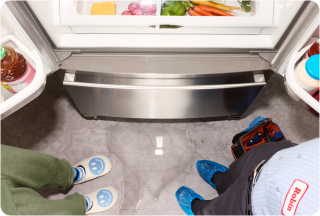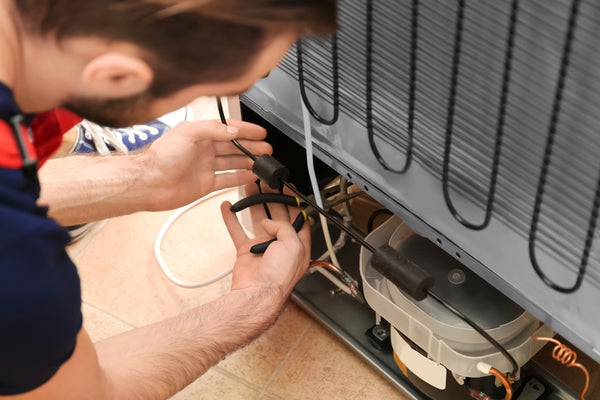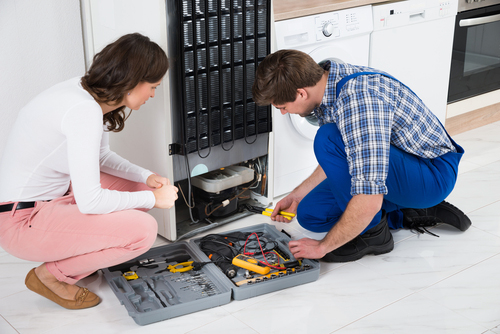We know it’s not magic, but it's definitely a convenience that we rely on daily.
Knowing how a refrigeration cycle works helps you care for and maintain your appliance, spot signs of trouble, and communicate with a contractor when a component needs attention. The more you know, the more prepared you’ll be!
The refrigeration process is a cycle that repeats itself again and again. In fact, the appliance gets its name from the refrigerant chemical used to create the cool interior environment. Refrigerants, such as pure ammonia, boil at very low temperatures, which is where the process begins.
Here is the Refrigeration Cycle Explained:
1. The Compressor Heats the Refrigerant
Your refrigerator’s compressor does just what its name implies—it compresses the refrigerant gas to heat it. How a refrigerator compressor works is by pulling in cool refrigerant gas and heating it by compressing it. As you’ll see, the compressor also controls the refrigerant flow.
2. The Refrigerator Coils Turn Hot Refrigerant Gas Into a Liquid
Most refrigerators have coils on the outside and inside of the unit that act as the refrigeration cooling system. The condenser coils on the outside (often on the back) allow the hot refrigerant gas to cool as it exits and pressurizes into liquid form. For example, ammonia gas would condense into ammonia liquid.
3. The Refrigerant Flows Through the Expansion Valve and Evaporates Into a Gas
Now under high pressure, the refrigerant liquid flows through the expansion valve to low pressure via the interior evaporation coils. When this happens, the liquid boils and turns into a vapor or gas, dropping temperature. This refrigeration cooling cycle is what makes the refrigerator interior cold.




